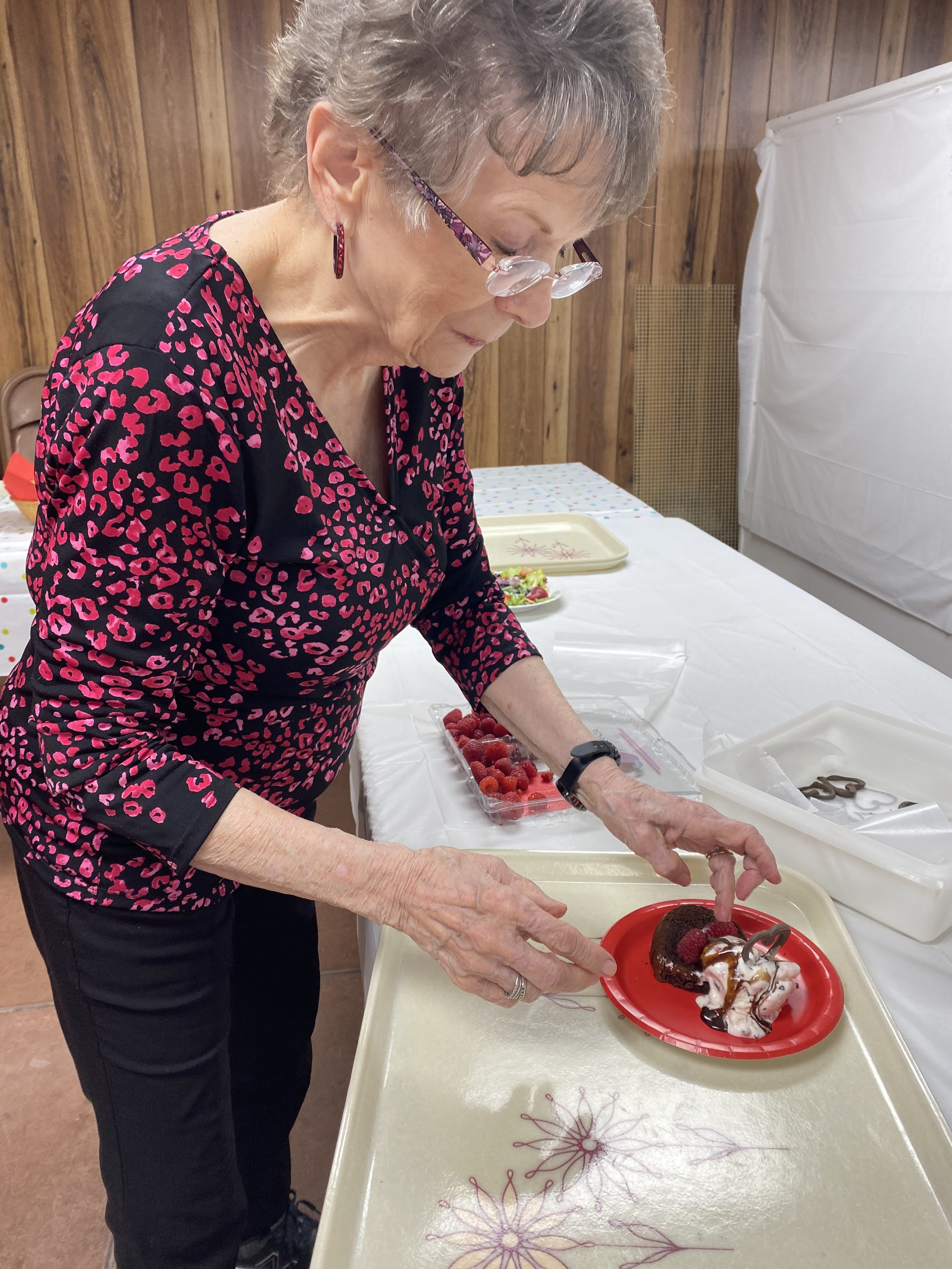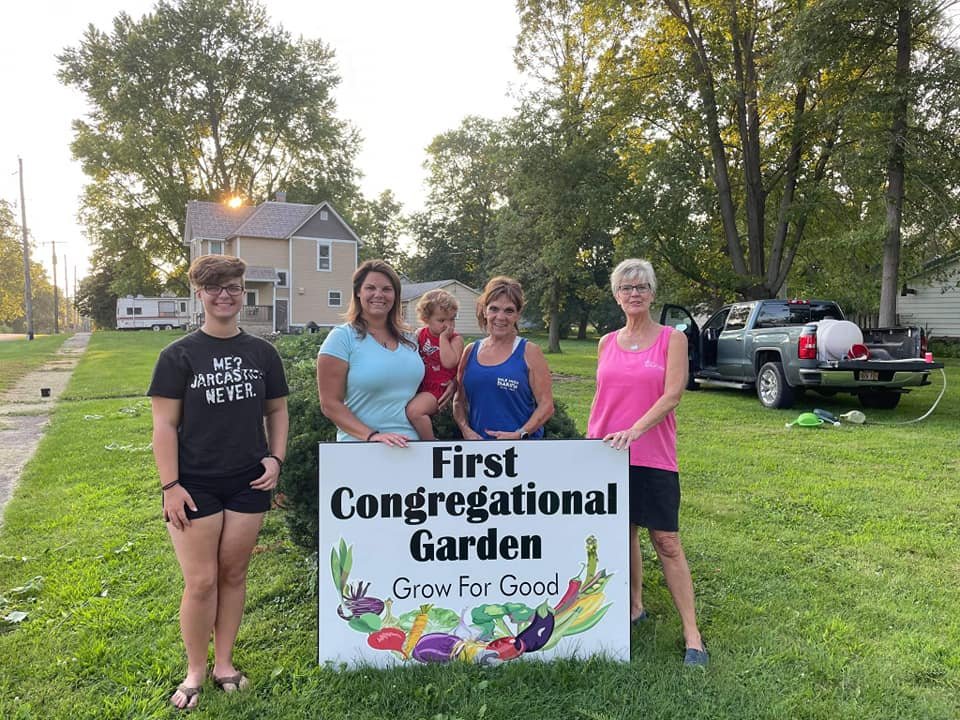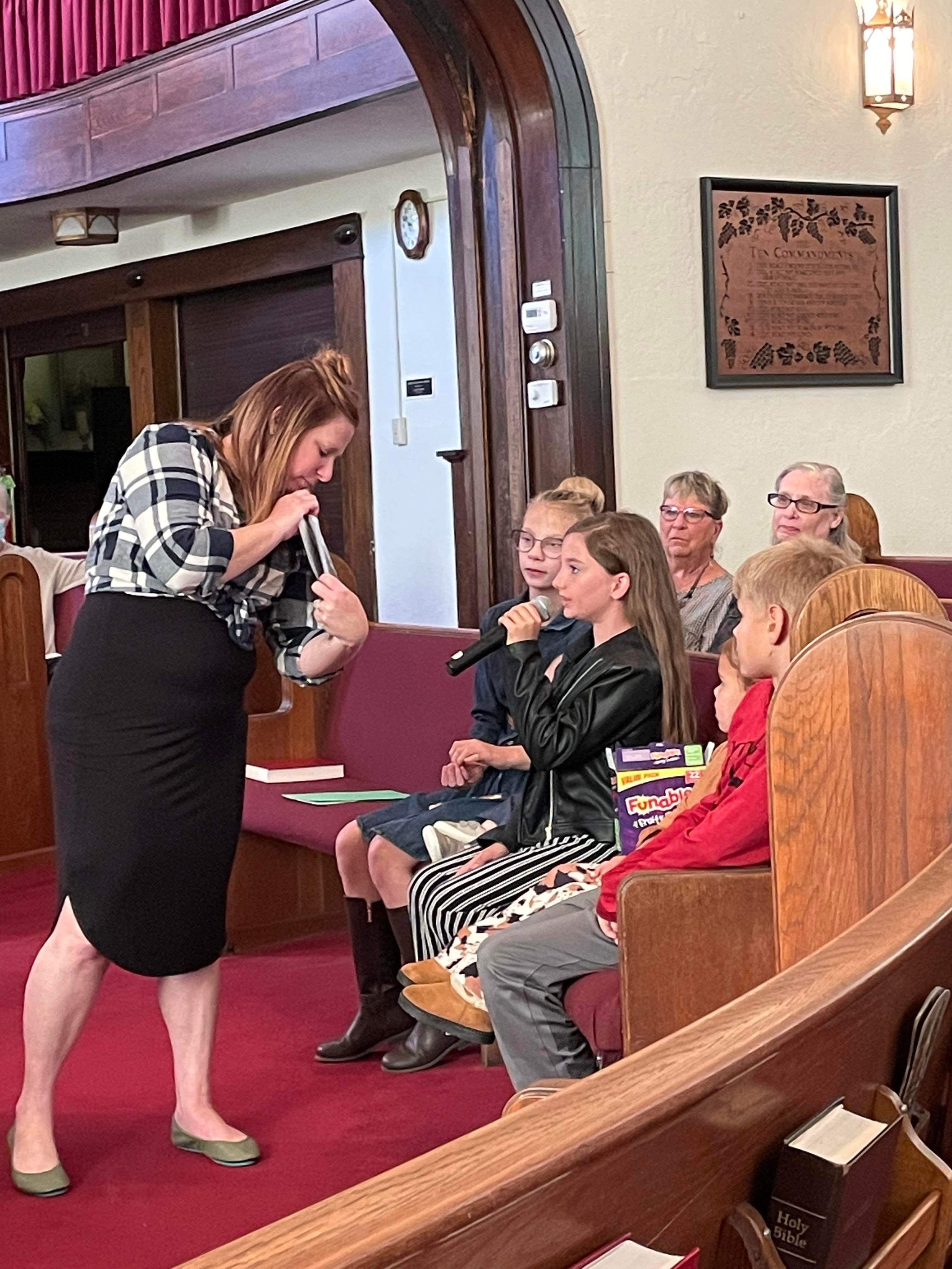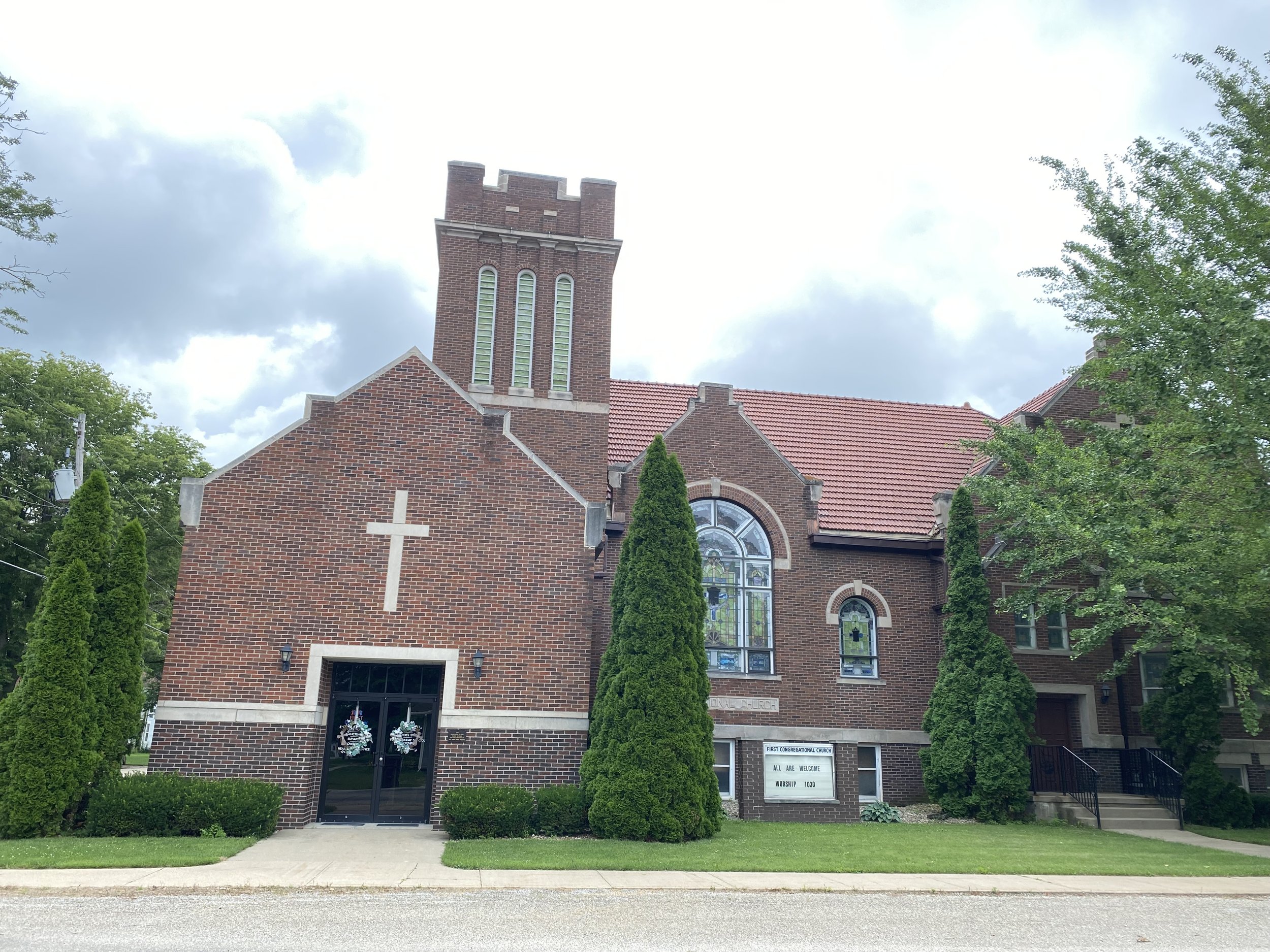First Congregational Church is a member of the National Association of Congregational Christian Churches and Midwest Association of Congregational Christian Churches.














Sunday School: 11:30 for youth on the 1st & 3rd Sundays of each month and
Worship: 10:30 am
Our History
Short Historical Summary of the First Congregational Church of Toulon—taken from Ham, Floyd E., First Congregational Church, Toulon, Illinois, 1846-2014;” October 2014.
The Toulon Congregational Church[1] was organized by Rev Lucius Parker and Rev Samuel Guild Wright on November 29th 1846. It consisted of only nine charter members—seven from the Jonathan Rhodes family and two from the Giles Dana family and was originally known colloquially as the Rhodes Church.
Plans were laid for the first meeting house less than three years later in 1849 and the first services were held in the nearly completed meeting house on December 13th 1851. This initial structure was disassembled in 1882 to make way for a new and larger church building in 1883; the original becoming part of the Wyoming Opera House.[2]
A fire in 1913 completely destroyed the second building[3] and the current edifice is a brick structure of the “Akron Plan” involving a diagonally designed sanctuary containing three particularly large and beautiful stained-glass windows and a large built-in pipe organ behind the pulpit. It was built in 1914.
It is believed that the Toulon Congregational Church is the oldest Illinois Church in continuous operation from the same site originally based on Congregational Polity and organized within the State of Illinois. Even before its organization in 1846, many of the first families that joined the church hosted Rev Wright as an itinerant preacher in their homes, barns and groves beginning in 1840. Rev Wright was a widely known abolitionist and anti-slavery Presbyterian preacher and was associated with several of the earliest churches in Illinois to pass Anti-slavery resolutions barring slave holders, sympathizers or apologists from taking the pulpit or receiving support from the Church.
The second minister, Rev Richard Dunn, while still Pastor, was also elected a member of the Illinois State Legislature and in that body, he introduced and secured the passage of the Bill which expunged the notorious “Black Laws” from the Statutes of the State of Illinois. Rev Wright had been indicted in Stark County in 1842 for harboring slaves but no trial was held as the States Attorney in October 1843 entered a nolle prosequi.
Other Church members that were known as vocal abolitionists and active Underground Railroad Agents were, Jonathan Rhodes, Hugh Rhodes, Rev Richard C Dunn, Edward Payson Wright, Dr Thomas Hall, William Hall, Nehemiah Wycoff and Liberty Stone. In 2010, the Church was honored by the Illinois State Historical Society as a “Historic Church” in conjunction with their 30th Annual ISHS Illinois History Symposium “Abolition: The Spark that ignited the Second American Revolution.”
In 1856, the Church revised its operating rules and declared that at all meetings, males and females are equally entitled to vote.
In 1862, Rev Dunn began transcribing the original records into a “good and substantial book” which has been kept current to this date. It contains the names of over 1700 members, 800 baptisms and the minutes of every official church meeting since it was organized.
Since its formation, the church has had only 31 ministers—the latest is also the longest lasting—Rev Wayne McLeod. Several members have become Ministers or Missionaries:
The Church was one of the first in the area to include music as a part of its services. In 1853, some of the members were quite shocked at the use of the “Devil’s Instrument” in the worship of God.
Eliza Wright, the daughter of Rev Wright, brought and played her own melodeon each Sunday. Very shortly thereafter, Mr Kellogg brought his violin and in 1855, the church reviewed and acquired the “Plymouth Collection of Hymns and Tunes” by Rev Henry Ward Beecher. This hymnal was the first to put the words and music into the hands of Church Congregations and brought together popular and singable music from many denominations.
Since that time the church has had three particularly long serving organists: Miss Lucretia Flint—50 years, Miss Irene Nowlan—50 years, Miss Esther Claybaugh—12 years and Mike Stahl—36 years and still counting.
Long-time and very talented Choristers are also a hallmark of the church: William Kellogg, Henry Perry, Robert Dickenson, Newton J Smith, Katherine Lowman Brace, Harry W Walker, Paul H Walker and Lynne Wagner Walker, director since 1976.
Home-grown ministers and missionaries include: Rev Mary Wright, Rev Alfred C Wright, Rev Willis C Dewey, Mrs Lucretia Dewey Burge, Dr James McCord, Mrs Mamie McCord Larkin, Mrs Ruby Rhodes Hillis and Mrs Margaret Perry Francis.
Four members have been honored and chosen Deacons-for-life: Charles P Dewey, Mills Dunham Dewey, Lloyd Harlan and Paul H Walker. Joel Wright was made Superintendent Emeritus of the Sunday School. In 1997, Mrs Annabelle Clark was recognized by the NACCC for “Volunteer Service in Christian Education” for teaching Sunday School for over 45 years.
Sue Slygh Carrington and James Graves were installed as Associate Lay Ministers in 2010. They are pictured here as our praise singers with Amy St John.
Missions have always been an integral part of the Church. The first collection for missions was in January 1851 and resulted in $13 for the American Home Missionary Society and $12.24 for the American Board of Commissioners for Foreign Missions. In 2012, the mission’s budget is set at over $7,500—just short of 10% of the total Church Budget. Additionally, the congregation has supported two work missions of members that spent a week rebuilding homes in the Appalachians in the last twenty years and hosted numerous missionaries that received donations while at the church.
The Toulon Church sought membership in May 1847 in the Central Association, an organization of Congregational Churches formed in October 1844 in Farmington. Rev Wright and Deacon George W Dewey were at the initial organizational meeting.
[1] From the Stark County Illinois History and Families; compiled by Donald Schmidt and the Stark County Genealogical Society; Edited by Charles Francis; published by Acclaimed Press, Morley MO 2013, Page 102
[2] From Toulon Congregational Meeting Minutes, dated October 14th 1882—“Sold the Old Church Building” and Leeson, page 270—“the old church, now the Opera House of Wyoming”
[3] Stark County News, March 2nd 1913, page 1: “Toulon Congregational Church Destroyed by Fire”

